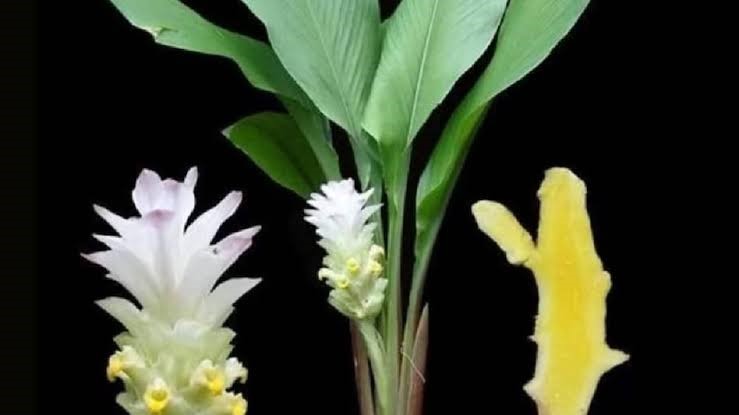
Curcuma Kakchingense

19.10.2023
Curcuma Kakchingense , Daily Current Affairs , RACE IAS : Best IAS Coaching in Lucknow
|
For prelims: Curcuma Kakchingense For mains GS paper 3: Importance of Curcuma plants, Red Data List, Manipur (Geography, Economy) |
Why in the news?
Three researchers in Manipur recently discovered a new flowering plant species and have named the new species Curcuma Kakchingense.
About Curcuma kakchingense:
- It is a new flowering plant species discovered in Manipur.
- It is a member of the angiospermic family Zingiberaceae, which includes well-known plants like Curcuma (turmeric), gingers, and cardamom.
- It is a robust plant, as tall as eight feet, having large terminal inflorescence.
- It was found thriving along the banks of the Sekmai River in the Kakching District of Manipur.
- It bears a striking resemblance to Curcuma longa, known locally as "Yaingung," and Curcuma phrayawan, a species from Thailand, but is distinguished by having lemon-yellow rhizomes with a very bitter taste.
- It has been classified as "Data Deficient" (DD) under the IUCN Red List category.
- For India 42 curcuma species were recorded and the last one to be described was curcuma kshonapatra from Karnataka in 2016, while the last one to be described from Mizoram was curcuma rubrobracteata in 2003.
Importance of Curcuma plants:
- Several species of curcuma are important for their use in cuisines, traditional medicines, spices, dyes, perfumes, cosmetics, and as ornamental plants.
- Curcumin and several curcuminoids found in curcuma species are nontoxic polyphenolic compounds that have biological activities.
- The essential oil of curcuma species possesses a wide variety of pharmacological properties, including anti-inflammatory, anti-cancerous, anti-diabetic, anti-hepatotoxic, anti-diarrheal, carminative, diuretic, anti-rheumatic, hypotensive, anti-oxidant, anti-microbial, anti-viral, insecticidal, etc.
IUCN Red List or Red Data List
- It was established in 1964, is the world's most comprehensive inventory of the worldwide preservation status of natural species.
- The International Union for the Conservation of Nature (IUCN) is the world's fundamental expert on the preservation status of species.
- It is a critical indicator of the health of the world’s biodiversity.
- Far more than a list of species and their status, it is a powerful tool to inform and catalyze action for biodiversity conservation and policy change, critical to protecting the natural resources we need to survive.
- It provides information about a range, population size, habitat and ecology, use and/or trade, threats, and conservation actions that will help inform necessary conservation decisions.
- More than 116,000 species have been evaluated on the IUCN Red List.
Manipur
Geography
- It is bounded by Nagaland on north, Mizoram on south, Myanmar on east and Cachar district of Assam on west. Geographically, the state is divided into two tracts, the hills and the plains.
- The eastern wing of the Himalayas, specially its lower hills, constitute an important feature of the landscape of Manipur.
- Some of the mountains are quite high, like a peak on the Nagaland-Manipur border which is more than 3,000 meters.
- Barak and its tributaries constituted the plains of the state. There are a number of rivers in the state.
- Some of them are Barak, Manipur, Iril, Jiri, Makru, Irang, Khuga, Chapki, Tizo etc. The state's capital Imphal is situated on the bank of Barak. Nearly 60% of the total area is under forest.
Economy
Agriculture
- It is the main source of occupation of the state. Due to heavy rainfall forests are abundant and the Jhum cultivation (old tribal habit of cultivation) continues.
- Rice is the dominant crop and staple food of the state. Maize, pulses, oilseeds, sugarcane, vegetables and potatoes are among the other crops.
Source:Hindustan Times